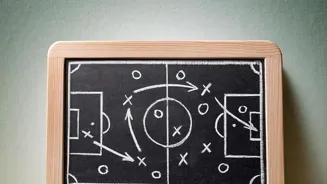Unveiling 10 Techniques to Enhance Workplace Collaboration - Dive into the essence of effective communication strategies
In today's fast-paced and interconnected world, effective communication is the bedrock
of any successful organisation. It's the invisible glue that holds teams together, fostering understanding, boosting productivity, and ultimately, driving positive outcomes.
In the Indian context, with its rich tapestry of cultures, languages, and work styles, the significance of clear and concise communication is amplified. When team members communicate well with each other, projects run much more smoothly.
The team works together better, with fewer misunderstandings and errors. This leads to more productivity and better results for everyone. Good communication also builds trust and respect, making the workplace a more positive and supportive environment for all.
Active listening and clear speaking skills are vital in communication
One of the most important communication skills is listening actively. This means paying close attention to what someone is saying, both verbally and nonverbally. Put away any distractions and focus fully on the speaker.
Show that you are listening by nodding, making eye contact, and using verbal cues like "I understand" or "Tell me more." Next comes the art of speaking clearly and concisely. This involves organizing your thoughts before speaking and making sure your message is easy to understand.
Avoid using jargon or technical terms that your audience may not be familiar with. Keep your sentences short and to the point. Using the appropriate language like English or Hindi based on the workplace and team is important.
Strong relationships key for effective workplace communication; trust, respect, empathy, and email etiquette vital
Building strong relationships is also vital for effective workplace communication. When team members trust and respect each other, they are more likely to communicate openly and honestly. Take the time to get to know your colleagues on a personal level and build rapport.
Show empathy and be supportive of their ideas and opinions. Encourage open dialogue by creating a safe and inclusive environment where everyone feels comfortable sharing their thoughts. Communication through email has become a norm now a days.
Email etiquette guidelines should be followed to ensure clarity and prevent misunderstandings. Use a clear subject line that accurately reflects the content of your message. Keep your emails concise and to the point. Do not keep forwarding emails when there is no need.
Encourage feedback, embrace tech for better communication in workplace
Encouraging feedback is also crucial for improving communication. Regularly solicit feedback from your team members on your communication style and effectiveness. Be open to receiving constructive criticism and use it as an opportunity to improve.
Provide feedback to others in a timely and respectful manner. Use "I" statements to express your perspective and focus on specific behaviors rather than making general judgments. Embracing communication technology can also enhance workplace collaboration.
A variety of tools and platforms are available to facilitate communication, such as videoconferencing, instant messaging, and project management software. Choose the tools that best suit your team's needs and ensure that everyone is trained on how to use them effectively.
Do not use tools that violate ethics and are illegal.
Practicing nonverbal cues and conflict resolution for effective communication
Practicing nonverbal communication is another important aspect of effective communication. Your body language, facial expressions, and tone of voice can all convey important messages. Be aware of your nonverbal cues and make sure they align with your verbal message.
Maintain eye contact, smile, and use an open and inviting posture. Managing conflicts constructively is also essential for maintaining a healthy workplace environment. When conflicts arise, address them promptly and respectfully.
Focus on finding solutions that meet the needs of all parties involved. Use active listening skills to understand the other person's perspective and be willing to compromise. Avoid using abusive words and do not get into fights. This is an indication of a bad culture.
Creating communication plan for workplace collaboration in India
Finally, creating a communication plan is important for ensuring that everyone is on the same page. This plan should outline the goals of communication, the target audience, the communication channels to be used, and the frequency of communication.
Regularly review and update the plan as needed to ensure that it remains relevant and effective. By implementing these ten techniques, organizations in India can significantly enhance workplace collaboration, fostering a more productive, positive, and successful environment for all.
This can help the overall work productivity and make India a better and happier country.
AI Generated Content. Glance/InMobi shall have no liability for the content










